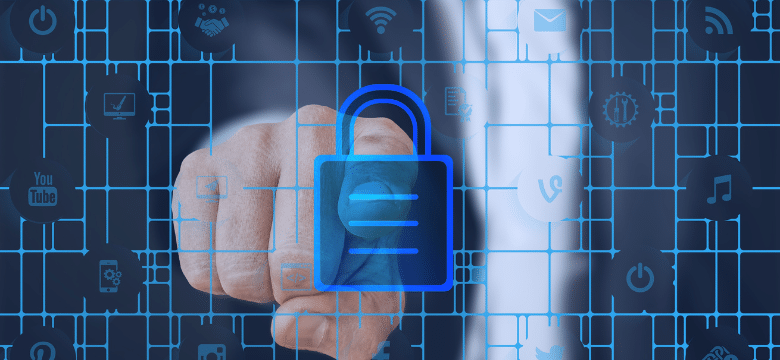In the digital age, cybersecurity has become a major concern for individuals and organizations. When cyber threats continue to evolve and grow in a more complicated way, it is crucial to adopt a comprehensive and proactive approach to safeguarding your systems, data, and digital assets. The 4 Pillars of Effective Cybersecurity: Protect, Detect, Respond, and Recover provide a powerful framework for maintaining a strong cybersecurity posture and mitigating the risks associated with cyber threats.
Pillar 1: Protect – Building a Strong Defensive Wall
The first pillar of effective cybersecurity is protection, which involves implementing preventive measures to protect your systems and data from unauthorized access. Key elements of protection include:
- Strong passwords and access controls: Imposing strong password policies, implementing multi-factor authentication (MFA), and controlling access to sensitive data and systems based on the principle of least privilege.
- Network security firewalls and intrusion prevention systems: Deploying firewalls to monitor and control network traffic and intrusion prevention systems to detect and prevent malicious activities.
- Data encryption: Encrypting sensitive data while stored (at rest) and while being transmitted (in transit) to prevent unauthorized access and data breaches.
- Update software regularly and patch vulnerabilities: Keeping software and systems up-to-date with the latest security patches and updates to solve existing vulnerabilities.
- User security awareness training and education: Educating employees on cyber threats, best practices and their role in maintaining a secure environment.
Pillar 2: Detect – Spotting Threats Before They Strike
The second pillar in the 4 pillars of cybersecurity is detection, which focuses on proactively identifying potential security breaches and attacks before they can cause significant damage. Some key elements of detection include:
- Security information and event management (SIEM) systems: Collecting and analyzing security-related data from various sources to detect and respond to potential threats.
- Endpoint detection and response (EDR) tools: Monitoring and analyzing endpoint activity, such as workstations and servers to detect and respond to advanced threats.
- Vulnerability scanning and penetration testing: Regularly assessing systems and applications for vulnerabilities and simulating real-world attacks to identify weaknesses.
- Security logs and data analytics: Analyzing security logs and data to identify suspicious patterns and potential indicators of compromise.
Learn about cybersecurity’s foundation: What is Cybersecurity? A Comprehensive Guide for Businesses
Pillar 3: Respond – Containing and Minimizing Damage
The third pillar, response, focuses on the actions taken when a security breach or cyberattack occurs. Key elements of the response include:
- Incident response plan with clear roles and procedures: Having a well-defined and practiced incident response plan that outlines roles, responsibilities, and steps to take during a security incident.
- Rapid containment of the threat to limit damage: Quickly isolating and containing the threat to prevent it from spreading and causing further harm.
- Identifying and notifying affected individuals or systems: Identifying and notifying affected parties, such as customers or employees, whose data or systems may have been compromised.
- Digital forensics to investigate the incident and root cause: Conduct digital forensics to analyze the incident, identify the root cause, and gather evidence for legal or regulatory purposes.
- Communication and transparency with stakeholders: Maintaining open communication and transparency with stakeholders, such as customers, employees, and regulatory authorities, throughout the incident response process.
-> The Cost of Cybercrime: Why Cybersecurity Matters
Pillar 4: Recover – Resilience in the Face of Adversity
The fourth pillar, recovery, emphasizes the importance of restoring normal operations and minimizing the impact of a cyberattack on business continuity. Some of them include:
- Backups and data restoration procedures: Maintaining reliable and secure backups of critical data and systems, and having tested procedures for restoring data and systems in the event of a disaster.
- A disaster recovery plan to ensure business continuity: Having a comprehensive disaster recovery plan that outlines the steps to restore critical business functions and maintain continuity during and after a cybersecurity incident.
- Testing and updating incident response and recovery plans regularly: Regularly testing and updating incident response and recovery plans to ensure they remain effective and aligned with evolving threats and business needs.
Learn more: Data Security in the Cloud: Cybersecurity for Cloud-Based Businesses
Conclusion
In the fast-moving environment, where cyber threats are becoming more and more advanced, adopting a comprehensive and proactive cybersecurity strategy is essential for protecting your organization’s digital assets, reputation, and business continuity. By implementing the 4 Pillars of Effective Cybersecurity – Protect, Detect, Respond, and Recover – you can build a robust and resilient cybersecurity posture that safeguards your systems, data, and stakeholders from the potentially devastating consequences of cyber threats. Contact us today to learn more about our comprehensive cybersecurity services and how we can help protect your organization.








